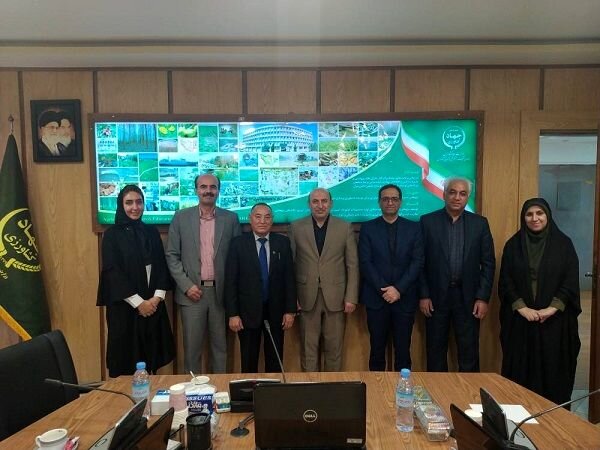INSUBCONTINENT EXCLUSIVE:
TEHRAN-The Food and Agriculture Organization of the United Nations (FAO) and the Iranian Ministry of Agriculture stressed the need for
boosting bilateral cooperation in the field of plant protection.Plant protection is a branch of agricultural sciences that studies biology
and the ecology of crops' harmful organisms
It develops methods to control and prevent crop damage and yield loss.It involves disciplines that require knowledge of the biology of
pests, principles of crop production, biotechnology, pesticide toxicology, and environmental sciences
Besides, plant protection is an integrated approach based on biological control strategies, population dynamics, and molecular and genetic
understanding of plant-pathogen, plant- pest interactions in order to minimize damaging species' impacts upon natural environments.In this
line, Mojtaba Khayyam-Nekouei, the deputy agriculture minister, held a meeting in Tehran on July 30 with Yuak Dhoj G C, the FAO
Representative ad interim to Iran.Referring to the important role of FAO and its potential in advancing agricultural projects, especially in
the research sector, Khayyam-Nekouei emphasized the need to approve a Technical Cooperation Program (TCP) as one of the main priorities.The
FAO official, for his part, stressed the necessity of expanding cooperation with the organization of agricultural research, education, and
He promised to place the priority on approving a TCP on plant protection.In May, the first technical cooperation program between FAO and the
Ministry of Agriculture was launched with the aim of increasing the productivity of dryland farming in the northwest of the country.Funded
by FAO, the joint project is designed for targeted support of food security, sustainable agriculture, and rural development, IRNA
3.7 million hectares were under wheat cultivation.Also, some one million hectares were planted with barley, 456,000 hectares were under
chickpeas, 126,000 hectares were under lentils, 44,000 hectares were under oil seeds, and 84,000 hectares were under fodder, producing as
much as six million tons of crops annually.In July, FAO and the Ministry of Agriculture embarked on a strategic partnership to bolster
pistachio production and export in Iran.The FAO representative ad interim, and Mohammad Mehdi Boroumandi, Deputy Agriculture Minister for
Horticulture, inked an agreement to implement the Pistachio Technical Cooperation Project.Pistachio, a cherished and economically crucial
crop in Iran, has gained international recognition for its quality and taste.With the objective of strengthening this vital sector, the TCP
project on "improving Pistachio's production and export through the establishment of integrated product management" aims to enhance
production efficiency, ensure sustainable farming practices, promote quality control mechanisms, and foster increased export opportunities
for Iranian pistachio producers using Integrated Crop Management, ICM, approach.To be piloted in the provinces of Khorasan Razavi, Kerman,

